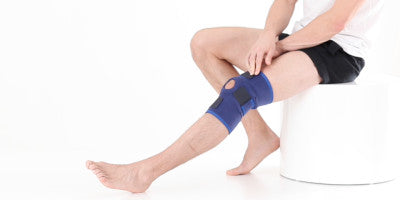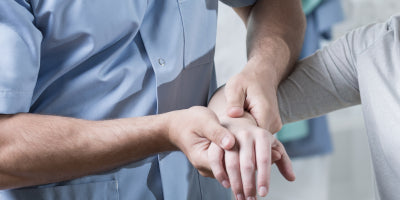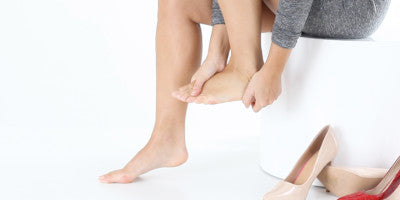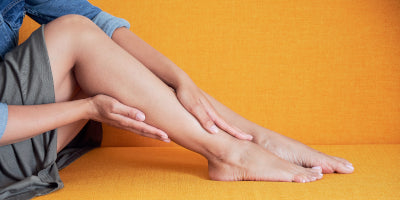How To Get Rid Of A Bunion
Bunions are a common and often painful foot condition characterized by a bony lump that forms on the side of the big toe. Many people suffering from bunions seek relief through various methods.
Can bunions be corrected without surgery?
It's essential to understand that while there are ways to manage the symptoms and discomfort, surgery remains the only definitive method to get rid of a bunion completely. Non-surgical treatments can help ease the pain and make everyday activities more manageable, but they do not eliminate the bunion itself. Methods such as wearing wider shoes, using bunion pads, or taking pain relievers can provide temporary relief. For those experiencing significant pain or severe deformity, consulting a healthcare professional to discuss surgical options is crucial. Surgery is the only way to correct the bone structure and provide a permanent solution to the problem.
What is a bunion?

A bunion (also known as Hallux Valgus) is a bony lump that forms on the joint at the base of the big toe. This condition occurs when some of the bones in the front part of the foot move out of place, causing the tip of the big toe to be pulled toward the smaller toes and forcing the joint at the base of the big toe to protrude. This can result in pain, swelling, and redness around the affected area. Over time, the bunion can worsen, leading to increased discomfort and difficulty in finding properly fitting shoes. Additionally, a similar condition known as a tailor's bunion or bunionette can occur on the joint of the small toe, causing similar symptoms and challenges on the outer side of the foot.
What does bunion pain feel like?
Bunion pain often feels like a persistent, aching soreness at the base of the big toe, where the bunion forms. This discomfort can range from a dull, throbbing pain to sharp, intense sensations, especially when walking or wearing tight shoes. This pain can extent to the ball and heel of the foot throughout the day. The area around the bunion may also be tender to the touch, swollen, and red, adding to the overall discomfort. Some people describe a burning or numb sensation around the bunion due to the pressure and friction against the protruding bone. The pain can be particularly pronounced after long periods of standing or engaging in activities that put additional stress on the feet.
What can be mistaken for bunion pain?
Gout can often be mistaken for bunion pain due to the similarities in symptoms such as intense pain, swelling, and redness in the joint area. Gout is a type of arthritis caused by the buildup of uric acid crystals in the joints, which leads to sudden and severe pain, often in the big toe. Like bunion pain, gout can cause tenderness and inflammation, making it difficult to distinguish between the two conditions. However, gout attacks typically come on suddenly and are characterized by sharp, acute pain, whereas bunion pain tends to develop gradually over time. Additionally, gout may also affect other joints in the body, not just the toe. Preventing gout involves lifestyle changes such as maintaining a healthy diet, reducing alcohol consumption, staying hydrated, and managing weight to decrease uric acid levels in the blood.
What causes bunions?
Bunions are caused by a combination of genetic, environmental, and lifestyle factors. The most common cause is wearing ill-fitting shoes, particularly those that are too tight, too narrow, or have high heels, which can put excessive pressure on the toes and force the bones out of alignment. Other contributing factors include foot injuries, arthritis, and neuromuscular conditions that affect the balance of the foot. Over time, this misalignment leads to the characteristic bony bump and associated pain. Structural defects in the foot, such as flat feet or abnormal bone formation, can also predispose individuals to develop bunions.
Are bunions genetic?
Yes, bunions can be genetic. If you have a family history of bunions, you may be more likely to develop them yourself due to inherited structural foot abnormalities. These genetic predispositions can include flat feet, excessively flexible ligaments, or certain bone shapes and formations that make bunions more likely. While genetics play a significant role, environmental factors such as shoe choices and repetitive stress on the feet also influence their development. Therefore, even with a genetic predisposition, taking preventive measures like wearing properly fitting shoes and avoiding high heels can help reduce the risk of bunions.
How to prevent bunions
Preventing bunions involves taking proactive steps to minimize pressure and stress on your feet. The most crucial measure is to wear properly fitting shoes that provide ample room for your toes to move freely, avoiding high heels and narrow-toed footwear that can squeeze your toes together. Opt for shoes with a wide toe box, good arch support, and cushioned soles to distribute pressure evenly across your feet. Additionally, maintaining a healthy weight can reduce the strain on your feet and lower your risk of developing bunions. Regular foot exercises to strengthen the muscles and improve flexibility can also help maintain proper foot alignment and prevent bunion formation.
How to prevent bunions from getting worse
If you already have bunions, there are steps you can take to prevent them from worsening. Firstly, continue to prioritize wearing comfortable, supportive shoes that do not aggravate the bunion. Using orthotic inserts can help to correct foot alignment and reduce pressure on the affected area. Applying ice to the bunion after prolonged activity can reduce swelling and relieve pain. Incorporating foot stretches and exercises into your routine can maintain joint mobility and strength. Additionally, avoiding activities that put excessive stress on your feet and seeking medical advice and treatment options, such as a Bunion Hallux Valgus Soft Support, can help manage symptoms and slow the progression of the bunion.
Do bunion correctors work?
Bunion correctors, such as splints and supports, do not work to permanently correct bunions or eliminate them. The question "how long does it take for a bunion splint to correct?" is misleading because these devices cannot reverse the deformity.
Can bunion supports help reduce the tendency towards bunion progression?
However, bunion supports, such as the Neo G Hallux Valgus Soft Support, can play a valuable role in reducing the tendency towards bunion progression. They can be used both pre- and post-operatively following corrective surgery to help maintain proper alignment and relieve discomfort. Supports with a malleable metal splint that can be bent to the desired angle are preferable, as they help align the big toe more effectively and provide better comfort and support during wear.











